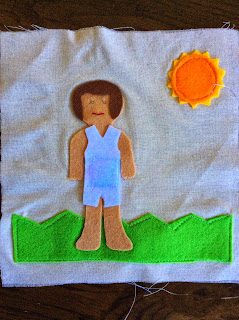This has always been one of our favourite books in our house. Our children are being brought up bilingual (my husband is German) and it's one of the few books that we have in both English and German.
From a teacher's point of view, I love the book because it teaches kids the days of the week, number sense and counting, the process of a caterpillar becoming a butterfly and, for our younger child, we even talk about colours when we read because the pictures are so bright and beautiful and those fruit pages are perfect for it.
Now, our eldest is 4.5 years old and very interested in learning about how to put a story together and how to read. And that is where the idea for the felt set has come from.

With right sides of the front and back together, I sewed around the edges, opened up the zipper and turned the case out the right way to finish with the above case.
But back to the felt set....I placed all layers as I wanted them when finished and sewed around each edge, a few millimetres in from the edges.























